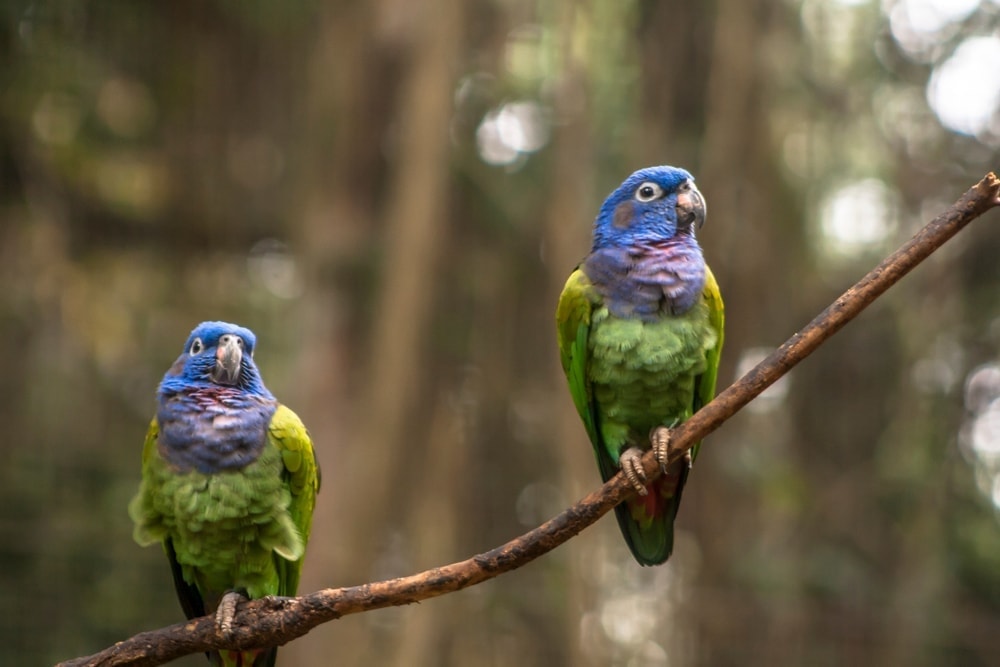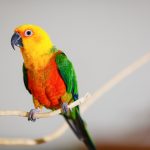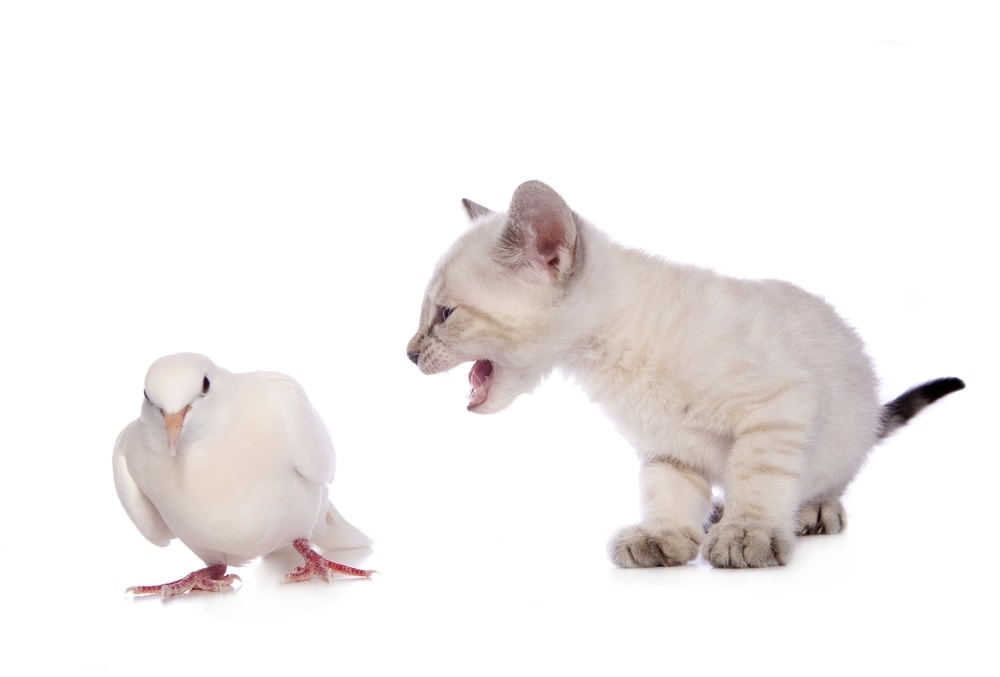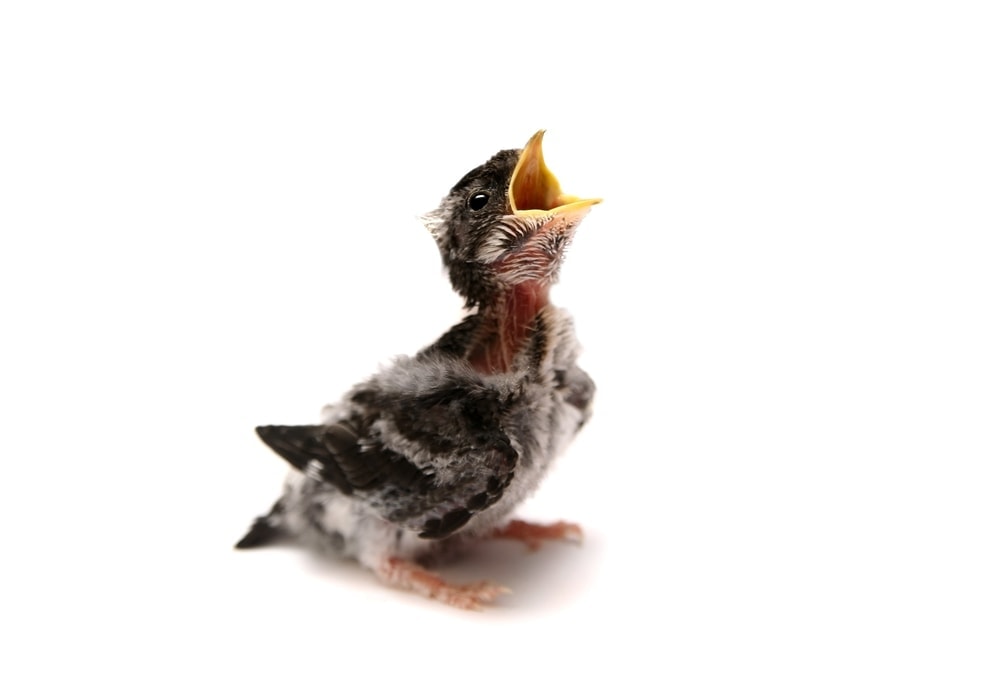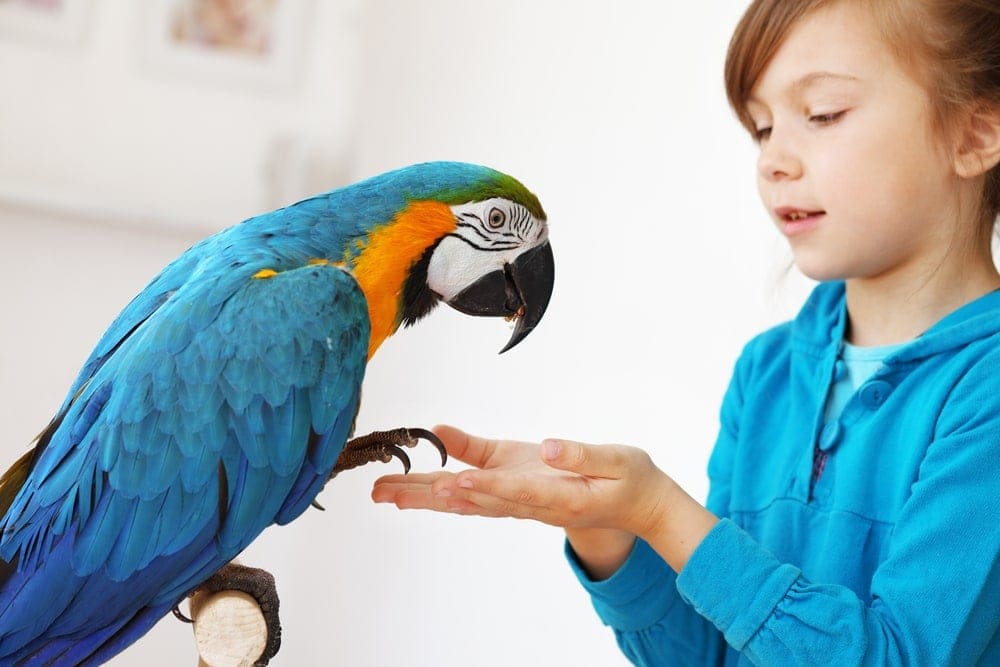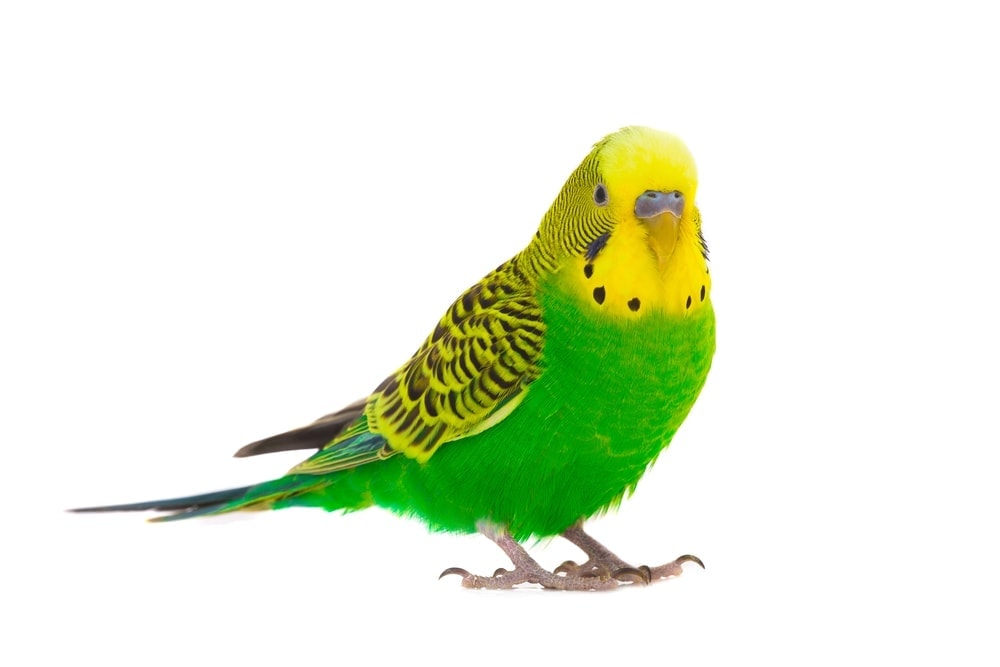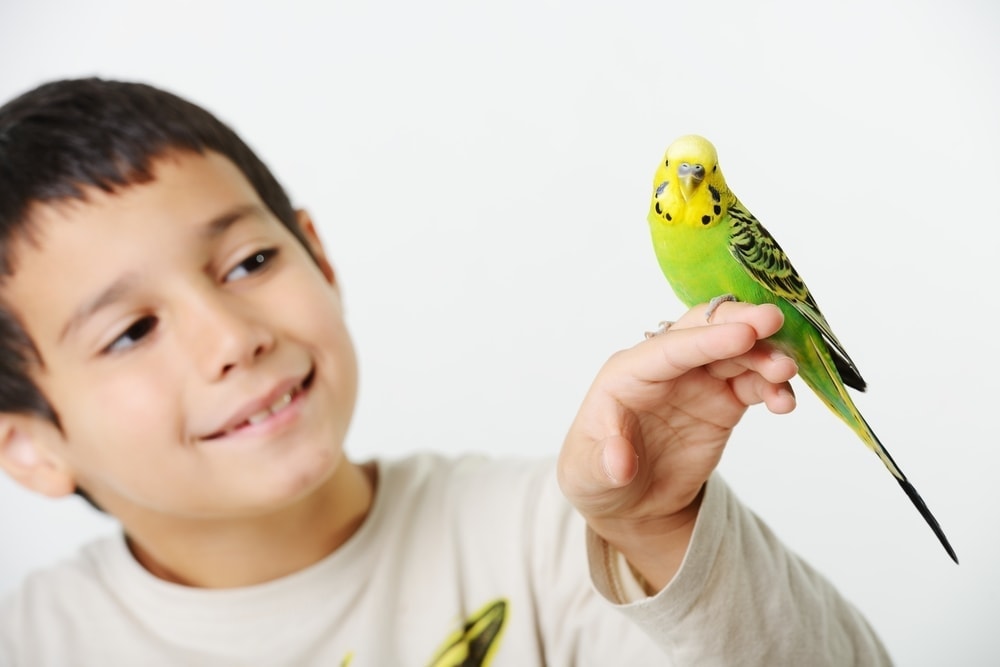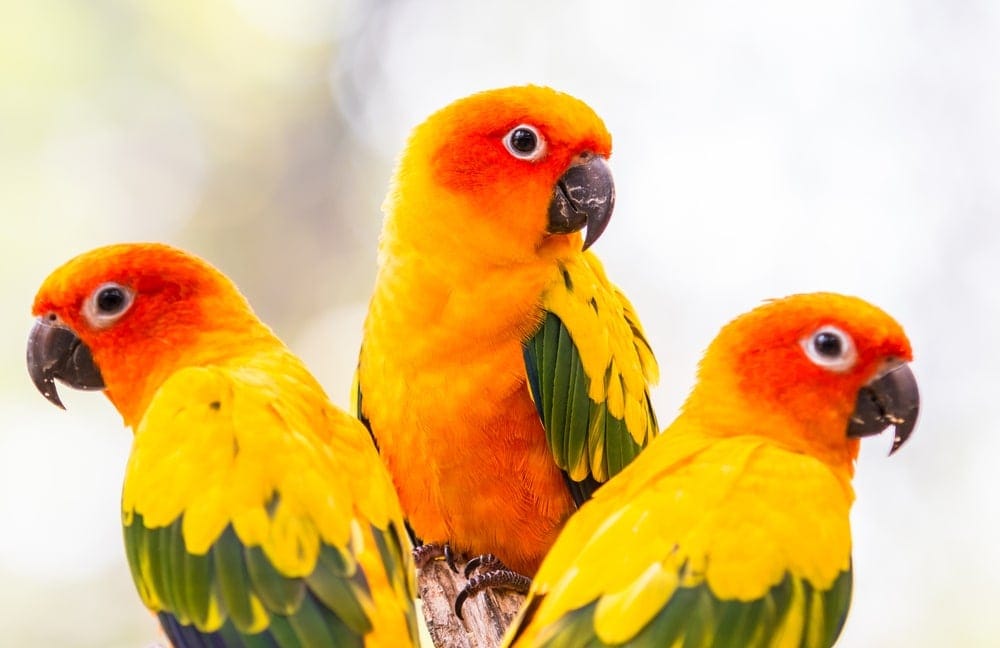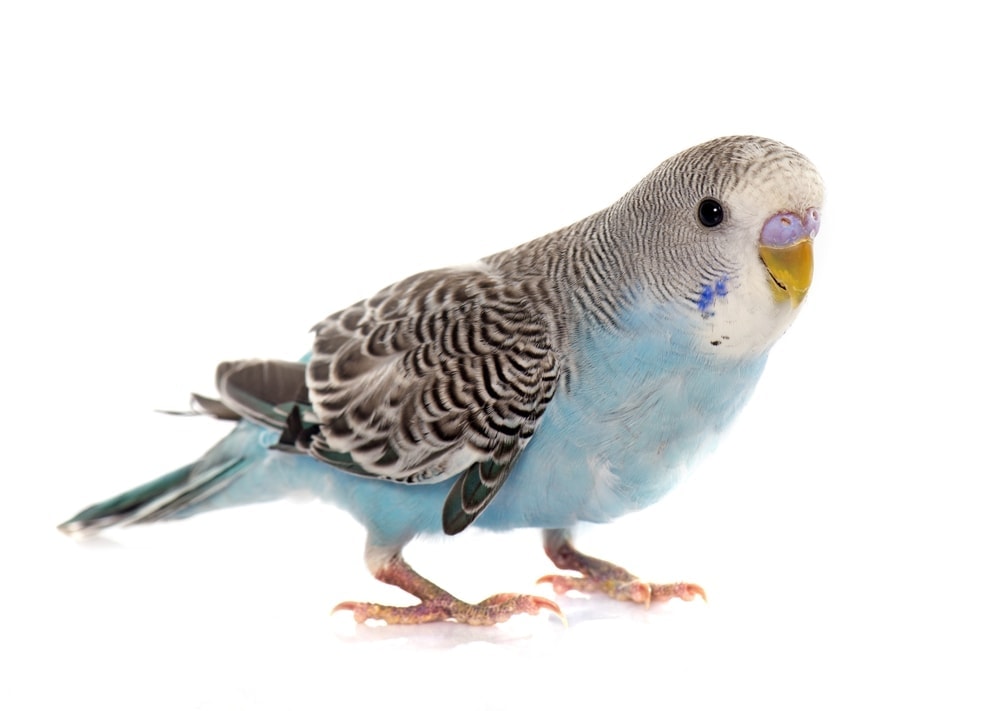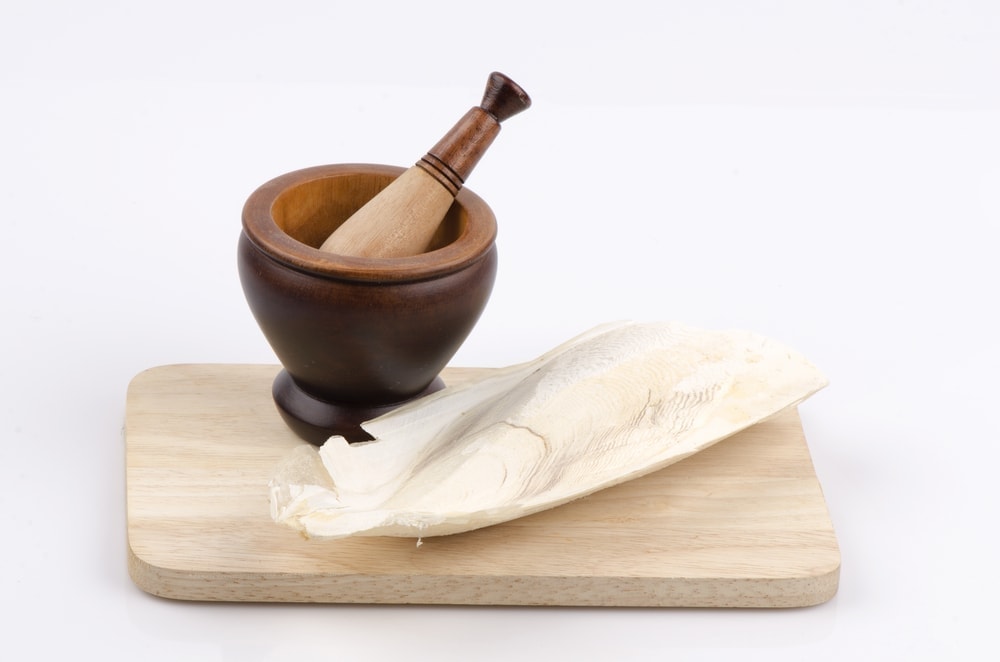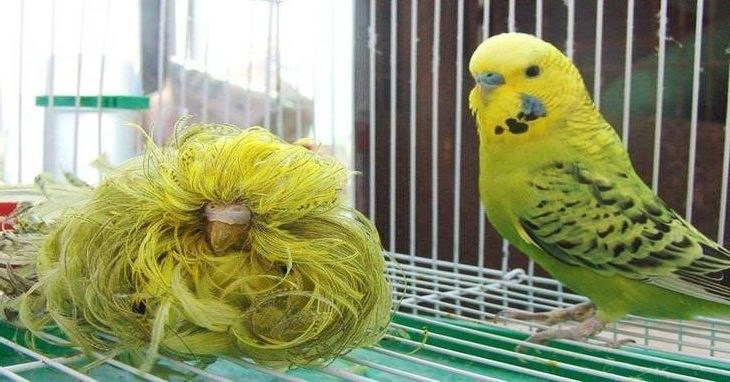The Blue Headed Pionus has a very mellow disposition that makes for an excellent pet.
In fact, it is one of the calmest birds you will ever meet.
Appearance
This beautiful bird has a blue head and neck with green plumage and a grey beak. It can grow up to 8.9 ounces with a length of 27 centimeters from head to tail.
Blue-Headed Pionus Lifespan
The Blue Headed Pionus can live up to 40 years in captivity when it is properly taken care of. There are records that have documented these birds living even longer.
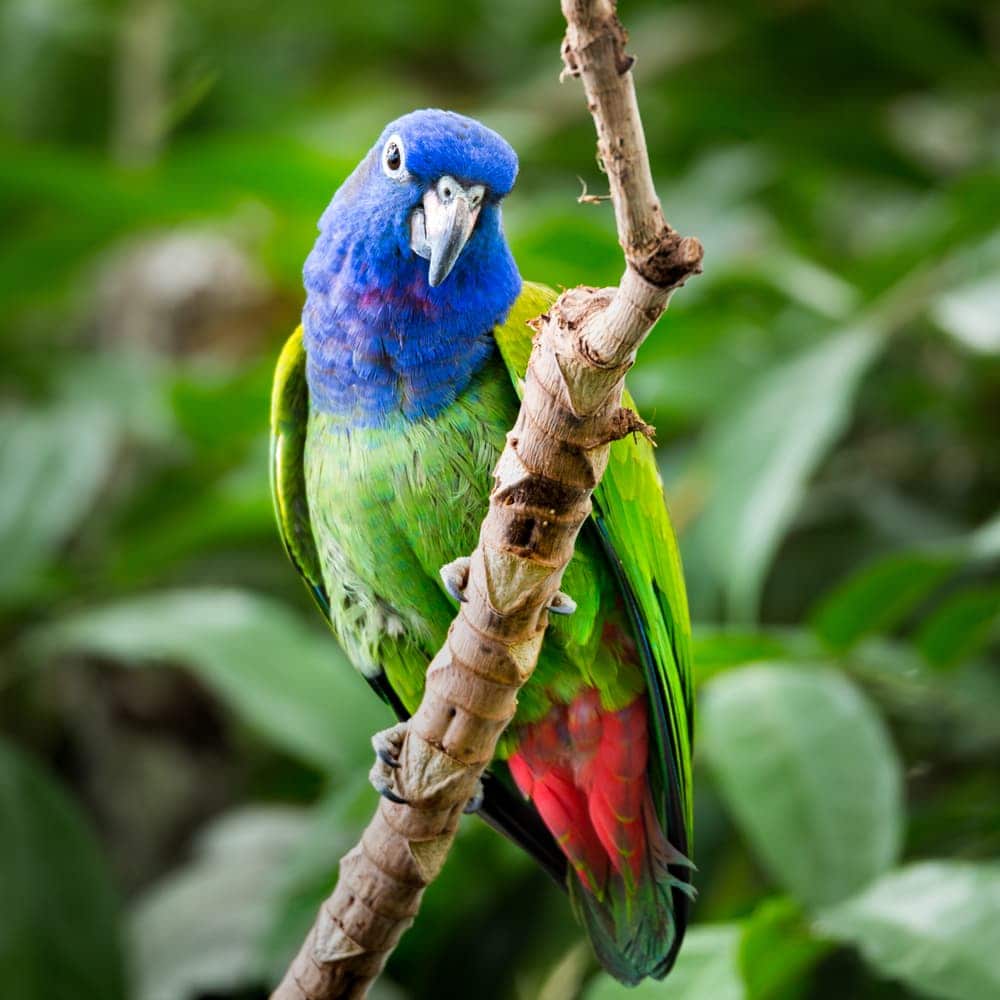
The Blue-Headed Pionus Personality
These birds have a reputation for being somewhat standoffish. They don’t particularly like being cuddled, but they do have a very laid back overall nature. You won’t have to worry about getting nipped or pecked most of the time.
The better you are at raising and socializing this bird from a young age, the better adjusted it is going to be. One of the best things about this bird is that it tends to be fairly quiet, which is perfect if you live in an apartment.
You will have to spend a decent amount of time with these birds on a daily basis. They may not love being held, but they do enjoy interacting with their human owners. Most people who own these birds describe them as being pretty easy going.
Natural Habitat
You can find these birds throughout the tropical regions of Costa Rica, South America, and Central America. They tend to make their nests in dense forests inside the trees. These birds love to be in humid areas.
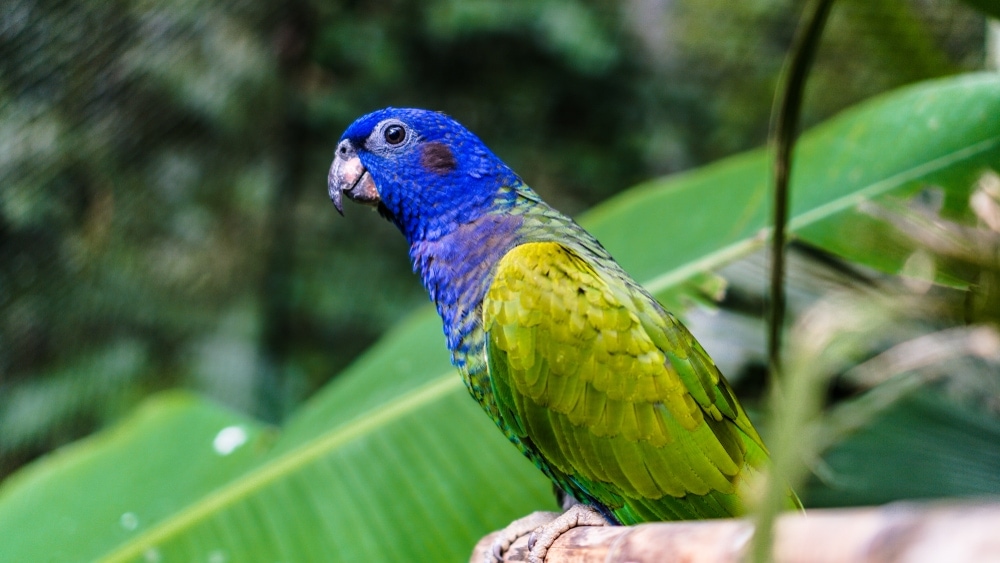
Blue-Headed Pionus Care Guide
1. Blue-Headed Pionus Diet
A pelleted diet is best for these birds, but you need to get the right product. It is important that you only feed them specially formulated pellets. This will ensure that all of their nutritional needs are being met.
You’ll also want to look for a seed mix that is well-suited for larger birds. This will help to supplement your bird’s diet.
You can also give it a variety of fruits and vegetables on a semi-regular basis. Some of these foods can include apples, bananas, sprouts, mango, cooked beans, carrots, greens, cantaloupe, and broccoli. Berries are a favorite snack of these birds, and they can have massive nutritional benefits.
A well-balanced diet is absolutely essential for the Blue Headed Pionus. They need to have a variety of foods in their daily diet to stay healthy.
2. Environment
You should get a cage that is no smaller than 8.5 by 3 by 6 feet for your Pionus. Make sure that the bars are spaced no farther than half an inch from each other. Your bird should be able to fly between perches without any issues. It is a good idea to have at least two different perches in their enclosure.
If the cage you put your bird in is too small, it won’t be able to get enough physical exercise each day. This can lead to excessive weight gain, which can come with its own set of complications.
You will also need to provide your bird with lots of different toys that it can have fun with. If these birds are not kept occupied, they tend to exhibit self-harming behaviors. This includes plucking out its own feathers, which is far from healthy.
The ambient temperature should not go over 80 degrees Fahrenheit in the warmer months, or under 40 degrees Fahrenheit in the colder months. Your bird simply won’t be able to survive in very cold or very hot temperatures for a significant length of time.
3. Common Health Problems
These birds can develop a vitamin A deficiency, which is all the more reason to provide yours with a balanced diet. This is why you don’t want to just feed your bird seeds and nothing else. They are also prone to developing fungal infections, which can be quite serious if left untreated.
It is fairly easy for Pionus birds in general to become obese, especially if they aren’t getting enough exercise each day. This is why you need to make sure that your bird has a big cage with ropes, swings, and other things to play with.
4. Grooming
You do not want to trim the wing feathers of these birds, as they can be quite delicate. There is also a very high possibility of injury, even when this is done by an experienced professional.
You can keep your bird clean by giving it a bowl of water in its cage to bathe in. These birds might reject the bowl, so you will have to refresh the water if it sits for more than a day.
Nail and beak trimming may be necessary with these birds, but this is not always the case. If you notice any overgrowth with either of these things, you should take your pet to the vet or a bird groomer.
Blue-Headed Pionus Price
You can purchase a Blue Headed Pionus for $1,500 to $2,500. There are numerous factors that can affect this price, including the bird’s age and overall health. These birds are more valuable when they are young.
Conclusion
- The Blue Headed Pionus can easily live up to 40 years when it is properly cared for.
- These birds tend to be a little standoffish and don’t particularly like being held for long periods.
- You will have to provide your bird with plenty of toys, perches and other things in their cage to keep them stimulated.
- The sooner you begin socializing your Pionus, the easier it will be to handle it outside of the cage.
- Your bird should be able to fly between its perches without any problems.
- You want to keep the ambient temperature comfortable throughout the year. If you are too hot or cold, so is your bird.
- These birds gain excess weight easily, which is why it is so important to make sure yours gets enough exercise daily.
- While Blue Headed Pionus birds can be expensive, they are very loyal and entertaining pets.
